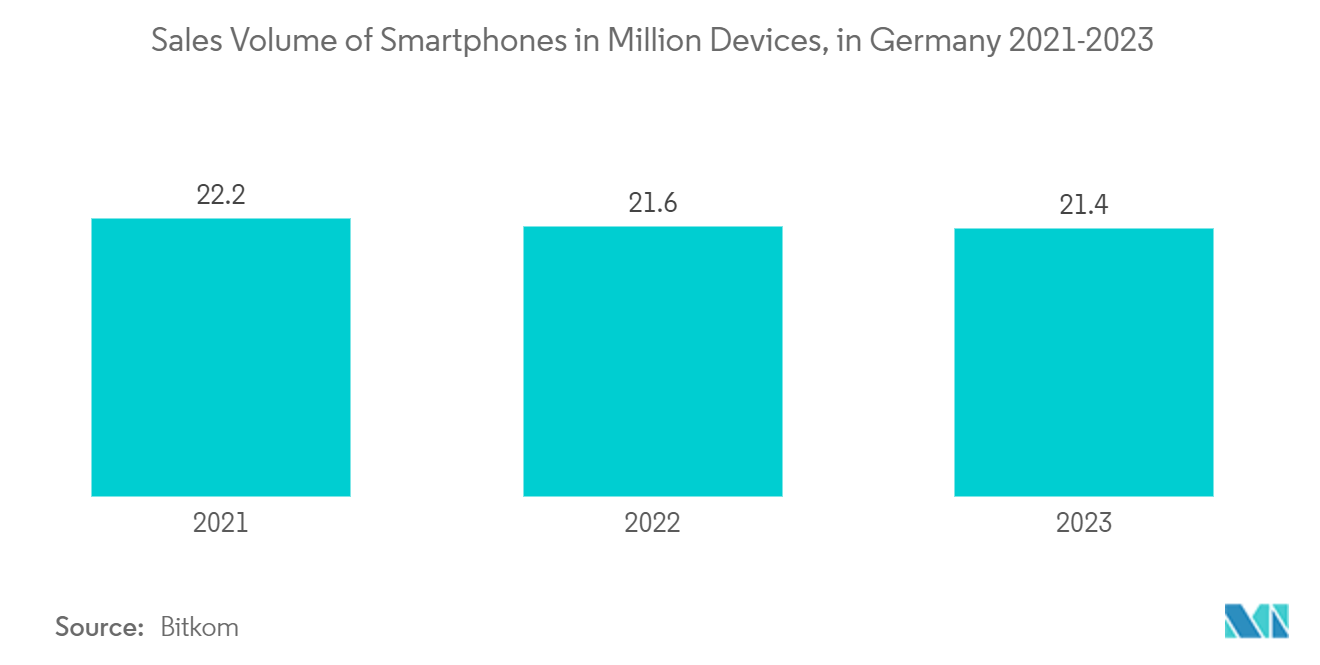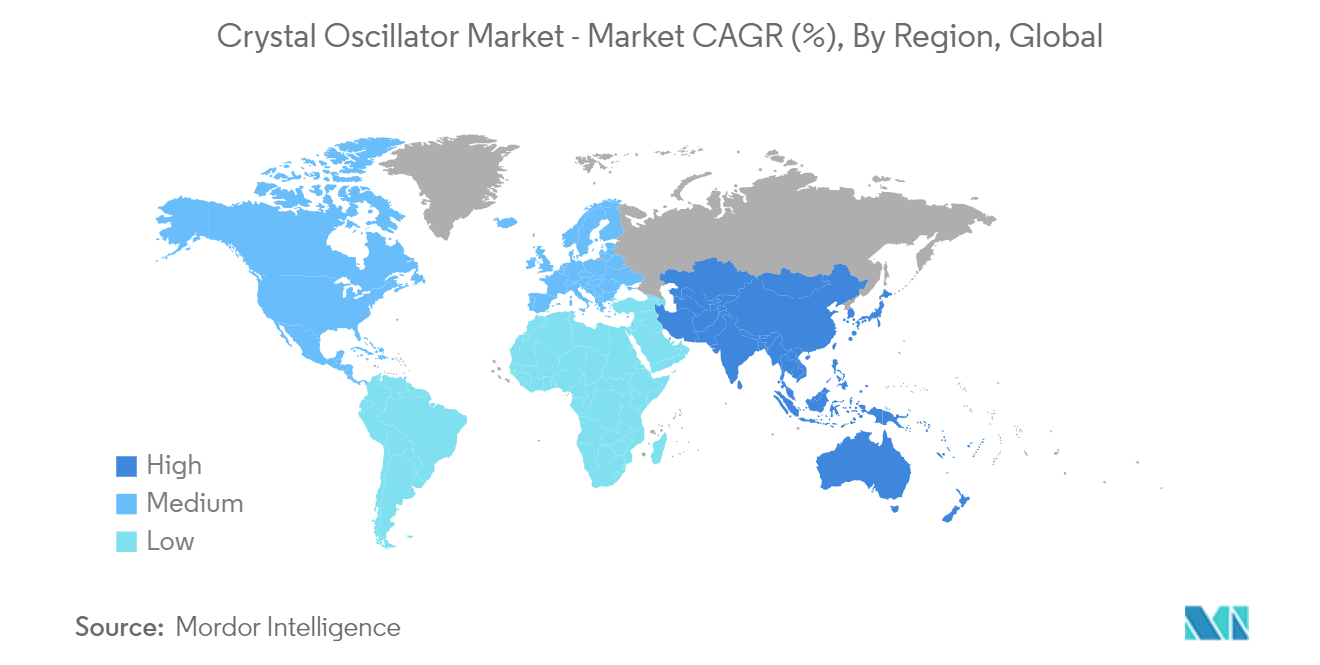Market Trends of Crystal Oscillator Industry
Consumer Electronics Segment is Expected to Hold the Prominent Share
- Frequent new launches of consumer electronic products are expected to fuel the market for crystal oscillators. Crystal oscillators are used in cable television systems, personal computers, digital cameras, radio systems, smartphones, and wearables.
- The growing penetration of smartphones is also creating significant demand for crystal oscillators. Usually, a smartphone has one or two 3 x 1.5 mm low-power 32 kHz quartz crystal oscillators, one primarily used for sleep-mode timing next to the baseband processor and the other commonly used to drive the power management chips.
- TXC Corporation’s SMD Crystal Oscillators with CMOS Output, 8N, and 8R Series, are designed with specifications of an output frequency range of 4-54 MHz, supply voltage up to 3.63 V, and frequency stability at 25, 50, and 100 ppm, for making them ideal for smartphones and sip modules, among other compact portable consumer products.
- Wireless data exchange has emerged as one of the most critical application areas for frequency components. This is applicable to wearables, such as fitness wristbands and smartwatches, which transmit the data to the wearer’s smartphone, and to intelligent production machines that communicate with each other as part of IoT applications. In all such cases, quartz crystals provide precise radio frequencies and ensure that the transmitter and receiver are on the same wavelength.
- For consumers, while making a purchase, the battery life of wearables is a key factor. In order to maximize the battery life, developers leverage the extended idle time by placing microcontrollers and other power-consuming components in a low-power sleep state. However, even in the lowest power sleep states, the systems need a real-time clock (RTC) to maintain the wall clock time and manage the scheduled events.

North America is Expected to Hold Significant Market Share
- The United States is emerging as a potential market for crystal oscillator manufacturers. The country's semiconductor and other electronic component manufacturing sectors produce a range of input devices necessary for electronics production, including circuits and memory chips.
- The industry has witnessed expansion over the past few years despite continued offshoring and greater competition from other regional manufacturers. The primary factor for this has been the growing demand for industry products, both domestically and abroad, and a global shortage of electronic components, which increased the prices of certain products. This offers a massive opportunity for regional studied market vendors.
- The country is home to some of the major automotive manufacturers, which is expected to create a demand for automotive equipment. Additionally, the increasing penetration of electric vehicles in the region is creating growth opportunities for the vendors operating in the market. For instance, in October 2022, Magna International announced the development of two new manufacturing facilities and the expansion of a third facility in Michigan to develop components specifically for electric vehicles.
- Moreover, the increasing penetration of smartphones and IoT-based devices in the region proliferates the demand for crystal oscillators. A typical smartphone or tablet uses up to five oscillators. According to Ericsson Mobility Report, 5G subscriptions in North America grew by 110 million during the third quarter of 2022 to around 870 million, and the number is expected to reach 1 billion by the end of 2022. Moreover, the company anticipates the region would have the highest 5G penetration at 91%. Additionally, as per Cisco, the region will have 329 million mobile users in early 2023, up from 313 million in 2018.
- The increasing development in the aerospace and defense industry also fuels the market. In Feb 2022, Orca Systems, a fabless semiconductor company delivering digital RF technology, announced its first wireless system-on-chip (SoC) solution for the satellite Internet of Things (IoT), the ORC3990. Components used in the ORC 3990 include a temperature-compensated crystal oscillator (TCXO), passive filters, and switches, among others.


